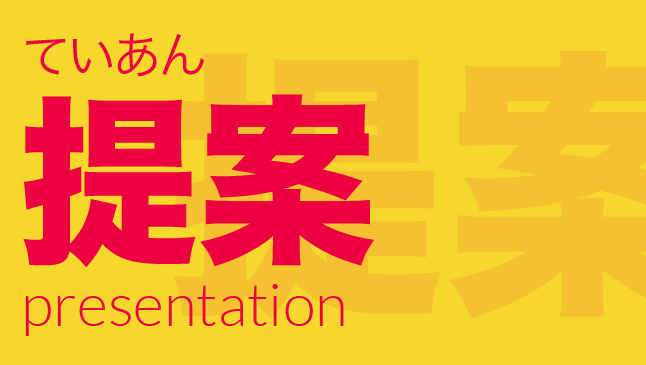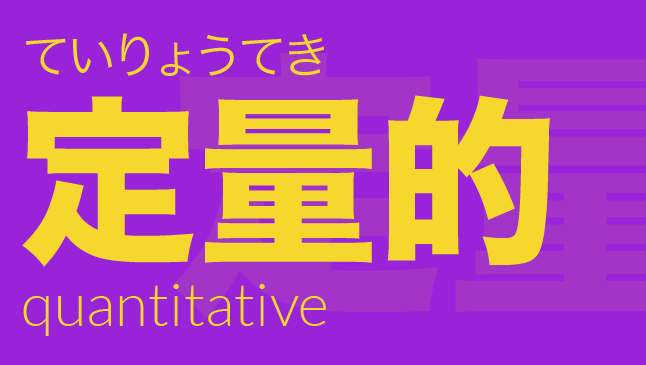|

Japanese is not my native language, but since moving to Tokyo in 2017 I have been working bilingually in both English and Japanese. I started studying in college, graduated, and then didn't use Japanese for nine years. Under these circumstances, I had difficulty adjusting. Now, I work in teams of native speakers fluently.
The first year I lived in Japan I didn't know the first thing about using Japanese in the workplace, much less in UX design. It was during that time I started making designgo (デザイン語), a play on the words 日本語 and design. I wrote down words I heard everyday and put them into colorful flashcards. These flashcards were originally published on my Twitter from 2017-2018. You can search designgo on my Twitter archive to see the original posts.
I've now moved away from Twitter and collected them into a single blog post for those that want to learn design-specific Japanese words. I've also added in my updated understanding of these words as I've become more fluent over the years. The pronunciations of are written in hiragana (ひらがな) and katakana (カタカナ) - if you don't know how to read these, I recommend using the hiragana/katakana practice guides on Tae Kim's Guide to Learning Japanese.
(Hiragana Practice | Katakana Practice)

設計 : design
Design, as in, what we do. The katakana デザイン can be used for the field of design, but 設計する refers to the "act" of design, that is, to design something like screens (画面) or user flows (ユーザーフロー).

疑問 : problem/doubt
I initially defined this as "problem," but this is better defined as "doubt." When saying things like, "to understand problems, use UX research" it is best to say 「問題を理解するためにUXリサーチを使います。」 For 疑問, a better use might be, 「このデザインは、疑問を解決したと思われますか?」("Does this design address your doubts?")

人間 : human
Humans—the people we design for. Human Centered Design is known as 人間中心設計 in Japanese. 人間 = human, 中心 = centered, 設計 = design.

目標 : goal/milestone
There are three ways to say "goal"—目的, 目標, and ゴール. They all refer to different "types" of goals. 目的 is the ultimate, final goal. 目標 are smaller, tactical goals or achievements/milestones we use to achieve the larger goal. ゴール is a broad word and can be used to define either final goals or tactical goals or milestones.

好奇心 : curiosity
We as designers should always bring a healthy dose of 好奇心 to any project. Ask questions. Ask why. Get bold!

具体的 : concrete, basic
This is a pair to the next word, 抽象的 - abstract. I've used this before in talking about how we structure workshop questions in Japanese—we "start from basic questions and work up to the abstract." 「具体的な質問から始まり、抽象的までに行きます.」

抽象的 : abstract
One of the biggest culture shocks designers from the U.S. or Europe have when they do work in Japan is the reaction people typically have to 抽象的な質問, or "abstract questions."

状態 : state, condition
I use 状態 for talking about 今の状態, or "current state" and 未来の状態, or "future state" designs. It is usually used to describe the condition of people or things. This is different than 状況, which is describing a "situation" that can contain many people and things.

未来的 : futuristic
Sometimes we talk about 未来的なデザイン, "futuristic design" or デザインの未来 "the future of design." 未来 is a pretty useful word in these cases.

理解 : understanding
I gave the example of, "to understand problems, use UX research" before. Here's the sentence again:「問題を理解するためにUXリサーチを使います。」You can see it right there—理解する is the verb "to understand" and 理解 is the noun "understanding."

映像 : (still) image
映像 is often used in design when talking about still images like photos or illustrations; I have also used 画像 or 画面 in reference to images of application screens, like mockups. The word 動画 is used for video or animation.

塗り : filled solid (shape)
This is used for "fill" as in, the color fill of a solid shape.

一文字 : straight line
Both 一文字 and 直線 can be used to convey "a straight line."

曲線 : curved line
The opposite of a 直線 is a 曲線.

上下 : ascenders & descenders
上下 literally means, "up and down," and based on context it can mean very different things. 上下関係 is "hierarchical relationship." When talking about fonts, 上下 is used for ascenders and descenders.

提案 : presentation/proposal
提案 is a word I initially understood as "presentation," but now I understand it as "proposal." This could mean a proposal of an idea or concept. It can be used as a noun (提案) or as a verb (提案する). I usually use it when saying, "now, this is just a proposal, but..."「ただの提案ですけれども、、、」

期待 : expectation
期待 "expectation" is another word that can be used as a noun if used alone and used as a verb "to expect" 期待する when adding the verb -する. For instance, 「プロジェクトの期待について教えていただけますか?」 "Can you tell me more about your expectations for the project?"

希望 : wish
希望 could be used for wishes or hopes—as in, what a wish or a hope for a product might be. I've also found the adjacent 要望 to also be helpful—these are "customer or client requirements."

理想的 : ideal, ideally
I use 理想的 a lot in my work. "What is your ideal workflow?"「理想的なワークフローは何ですか?」or "Ideally, we'd need 12 participants to research."「理想的に12人をインタビューしたいと思います。」

体験 : experience
As in, ユーザー体験 — user experience.

目的 : goal
As we mentioned in the previous tactical goal, 目標、目的 is the ultimate, final goal whereas 目標 are the things that need to be achieved to get to that goal.

重要 : important
This is commonly used in terms of prioritization or making a point about what is important. For instance,「重要なのは、、、」"What's important is..." or perhaps, 「コンセプトの一番重要なことは何と思いますか?」"What do you think is the most important part of this concept?"

優先 : important
Speaking of prioritization, 優先 is a very versatile word. You can use it as-is, or as 優先する, "to prioritize," or use the word 高優先 which means, "highest priority."

合成 : synthesis
Design synthesis is a word that is incredibly difficult to translate. Using English helps people remove themselves from preconceived expectations of a word, such as 「シンティシス」. If I were to explain the English word シンティシス, it would be 「合成と分析の混ざり」, or "a mix of synthesis and data analysis." 合成 is "the synthesis of two concepts" and 分析 is "data analysis."

分析 : analysis
分析 can be used in both 定性的なデータ分析 "qualitative data analysis" and 定量的なデータ分析 "quantitative data analysis."

定性的 : qualitative
UX research, contextual inquiry, ethnographic studies—these can all be described as 定性的なリサーチ or "qualitative research."

定量的 : quantitative
Things like surveys and experiments that have to do with exact numbers are described as 定量的なリサーチ or "quantitative research."

意味 : meaning
In design, we seek to pursue the why of things, to understand the meaning.

観察 : observations
When we do UX research, we start first from observations, or 観察 in interviews or contextual inquiry. These are our initial notes. Then using affinity mapping, or light シンティシス, we form "themes," and then "insights," and sometimes "principles."

テーマ : theme
テーマ are the result of affinity mapping; these are themes, or thematic similarities between observations in your research.

洞察 : insights
Grouping テーマ together can give you insights. Initially when I made these cards, I felt 洞察 was an appropriate word for insights; but nowadays I rarely use it because it comes off as too academic and hard to grasp. I use the word 気づき, which is easier for others to understand.

原則 : principle
This can be used for design system principles or brand principles.

環境 : environment
TBD